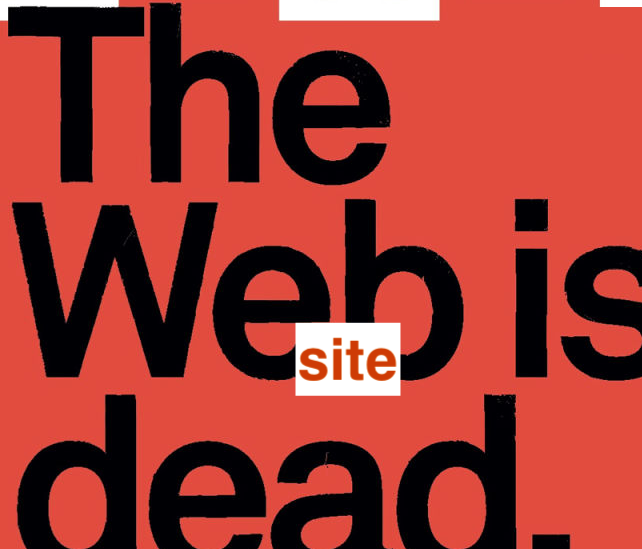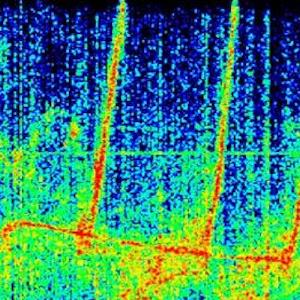History Versus Future
Iranian electronic music, an emerging micro-culture in focus has an unseen relation to the islamic 'black friday' revolution of 1979. Even though one is separated from the other by over 35 years. The sounds and artistic deviations of Iranian electronic music, now in it's infancy is high in contrast with a 2500 year old land and it's deeply rooted customs and traditions. A large number of emerging or established Iranian artists, writers and activists live outside Iran, as expats or as part of a migrant generation now dotted allover Europe and bits of North America. Almost everything in Iran has a foreshadow or post-script of the revolution. Of Iranian movies, literature, poetry, architecture and music is proof of that. However, we are not searching for the cause nor repercussions of a hardcore partisan revolution that transformed Iran. A transformation from a bourgeois 'America sponsored' regime into a god-fearing patriarchal state. Oil, Terrorism, Media Blacklisting, Nuclear Weapons and The Ayatollah is what the general public usually associates with Iran. We are scanning Iranian electronic music in it's native light and busking for new narratives. The oldest surviving pre-persian architecture in Iran dates back to 2200 BC while the earliest Iranian electronic music recorded by Alireza Mashayekhi in 1971. "Western electronic music played by a DJ is forbidden here in Tehran, it happens but we don't know where" states Farhod Asari, head of an entertainment agency based in Tehran.
A Minor Iran.
A Minor Music is a non-profit project initiated by photographer Malthe Ivarsson. A Minor aims to create awareness about and document the rise of Iranian electronic music. The website reads "it will talk about the circumstances of producing and performing electronic music in Iran. Leaving you to enjoy the music and hopefully encouraging you to explore deeper into this world of music" The compilation begins with Ata Ebtekar and Mazdak Khamda's 'Lonesome Cloud'. Ata Ebtekar states "there was nothing going on here (Tehran) 8-10 years ago. Together artists can make a difference to the scene ... hopefully make it into a business as well" Ata Ebtekar was born 1972 in Hamburg of Iranian parents. He spent his childhood partly in Iran and mostly in Germany. Now being hailed as a "pioneer" of Iranian electronica by popular music websites. The compositions of Tegh, Pouya Pour-Amin, Umchunga, Arash Akbari, Alireza Mashayekhi, Shaahin Saba Dipole and Baaroot reveal the diverse and non-confirmist fabric of Iranian electronic music. Though some of the artists do not live in Iran, the compositions often contain native folklore, chants and traditional sampled instruments. Distinct traces of synthesis and dark ambience as well. The A Minor initiative is aiming to manifest it's work as a feature length film about the scene. A documentary type introduction to native iranian electronic music.
Iranian electronic music, an emerging micro-culture in focus has an unseen relation to the islamic 'black friday' revolution of 1979. Even though one is separated from the other by over 35 years. The sounds and artistic deviations of Iranian electronic music, now in it's infancy is high in contrast with a 2500 year old land and it's deeply rooted customs and traditions. A large number of emerging or established Iranian artists, writers and activists live outside Iran, as expats or as part of a migrant generation now dotted allover Europe and bits of North America. Almost everything in Iran has a foreshadow or post-script of the revolution. Of Iranian movies, literature, poetry, architecture and music is proof of that. However, we are not searching for the cause nor repercussions of a hardcore partisan revolution that transformed Iran. A transformation from a bourgeois 'America sponsored' regime into a god-fearing patriarchal state. Oil, Terrorism, Media Blacklisting, Nuclear Weapons and The Ayatollah is what the general public usually associates with Iran. We are scanning Iranian electronic music in it's native light and busking for new narratives. The oldest surviving pre-persian architecture in Iran dates back to 2200 BC while the earliest Iranian electronic music recorded by Alireza Mashayekhi in 1971. "Western electronic music played by a DJ is forbidden here in Tehran, it happens but we don't know where" states Farhod Asari, head of an entertainment agency based in Tehran.
A Minor Iran.
A Minor Music is a non-profit project initiated by photographer Malthe Ivarsson. A Minor aims to create awareness about and document the rise of Iranian electronic music. The website reads "it will talk about the circumstances of producing and performing electronic music in Iran. Leaving you to enjoy the music and hopefully encouraging you to explore deeper into this world of music" The compilation begins with Ata Ebtekar and Mazdak Khamda's 'Lonesome Cloud'. Ata Ebtekar states "there was nothing going on here (Tehran) 8-10 years ago. Together artists can make a difference to the scene ... hopefully make it into a business as well" Ata Ebtekar was born 1972 in Hamburg of Iranian parents. He spent his childhood partly in Iran and mostly in Germany. Now being hailed as a "pioneer" of Iranian electronica by popular music websites. The compositions of Tegh, Pouya Pour-Amin, Umchunga, Arash Akbari, Alireza Mashayekhi, Shaahin Saba Dipole and Baaroot reveal the diverse and non-confirmist fabric of Iranian electronic music. Though some of the artists do not live in Iran, the compositions often contain native folklore, chants and traditional sampled instruments. Distinct traces of synthesis and dark ambience as well. The A Minor initiative is aiming to manifest it's work as a feature length film about the scene. A documentary type introduction to native iranian electronic music.
Rave in Iran?
"I am fed up of doing things secretly. It's all underground in our country" - Rave in Iran is a short film [Director : Susanne Regina Meures] which documents the perilous road taken by two DJs who risk their lives to make parties in the hinterland. Anoosh and Arash are at the center of Tehran’s virtually unknown 'underground techno scene'. Fed up of hiding from police and orthodoxy, add a total lack of patronage facing a hopeless stagnating career. The duo (known as Blade & Beard) dare to organise 'one last manic techno rave' under dangerous circumstances : risking retribution and incarceration. Techno-Martyrs "Only after ecstasy arrived in Iran that electronic music began to become popular. Ecstasy finally allowed people to be in the mood and mental space to enjoy this type of music" explains Anoosh. The duos rebellious efforts championed by leading tastemakers based in Germany and Holland leads to an invitation to perform at a 'very happening festival' in Berlin. Their family back in Tehran recoils. What next? How does this micro-culture survive?
"I am fed up of doing things secretly. It's all underground in our country" - Rave in Iran is a short film [Director : Susanne Regina Meures] which documents the perilous road taken by two DJs who risk their lives to make parties in the hinterland. Anoosh and Arash are at the center of Tehran’s virtually unknown 'underground techno scene'. Fed up of hiding from police and orthodoxy, add a total lack of patronage facing a hopeless stagnating career. The duo (known as Blade & Beard) dare to organise 'one last manic techno rave' under dangerous circumstances : risking retribution and incarceration. Techno-Martyrs "Only after ecstasy arrived in Iran that electronic music began to become popular. Ecstasy finally allowed people to be in the mood and mental space to enjoy this type of music" explains Anoosh. The duos rebellious efforts championed by leading tastemakers based in Germany and Holland leads to an invitation to perform at a 'very happening festival' in Berlin. Their family back in Tehran recoils. What next? How does this micro-culture survive?
Depravity, Diaspora and Orientalism.
Questions of identity, migration and international awareness loom in the background of Iranian electronic music. Given the light allocated by western institutions on Iranian electronic music has been on a steady rise in the last decade, the artists have found very little place in popular iranian culture. "The biggest problem is that we don't have enough audiences here in Iran. Especially for experimental, ambient and progressive electronic music" says Tegh who has been striving to organise concerts and a record label in the last 6-7 years. Most of Iranian electronic music is not released natively in Iran. Rather in UK, Germany, Canada and US. Various conflicting reasons emerge. Some Iranian artists and musicians find the patronage of western institutions and life in Europe to be way more 'free and progressive'. Many artists based inside Iran speak of the heavily 'controlled' media, police brutality and the lack of formal music education in Iranian society. The internet being the biggest outlet for hundreds of Iranian artists of various disciplines. Thousands yet that we don't know of. "I need to get the hell out here" exalts Anoosh, A techno-electro DJ based in Tehran. "We can get venues and we can get the permission but the thing that makes me more anxious is that people don't show up ... I am working on it" states Shaahin Saba a.k.a Dipole, an ambient music producer based in Tehran . However it's important to know that experimental and fringe electronic music faces similar challenges (resources and audiences) across the world currently. "I got my first few gigs in Dubai at private parties which motivated me to find more electronic artists in Tehran" says DJ Nesa founder of Deep House Tehran in a recent interview. "Tehran is a dusty and polluted city. Everything has some layer of dark matter on it. That's why my mixes and sounds are dusty, obfuscated and textured. That sharpness and brightness like Berlin techno or Alva Noto does not exist for me" exudes Baroot, a producer dwelling into ambient, industrial forms. The Iranian electronic music spectrum is loaded with dissonant voices as well as conflicting ideologies. Resonating with a society in change, emerging from Tehran and outside. Small festivals [SET and Limited Access] and 'permissible' art events are invoking a new narrative into popular Iranian culture and urban life.
Palestinian born philosopher, writer and peace activist Edward. W. Said in his academic treatise discussed Orientalism as the key to power dynamics between the east and west. One that existed 500 years ago and even does today. Defined "as the West's patronising representations of "The East—the societies and peoples who inhabit the places of Asia, North Africa, and the Middle East. According to Said, Orientalism (the Western scholarship, patronage, outlook, relationship) is inextricably tied to the imperialist societies who produced it, which makes "Orientalist work inherently political and servile to power" Modern Iranian culture, diaspora or native has been 'viewed and dealt' with under a similar context. Western outlook on emerging Iranian culture has been well 'Orientalised'. Issues of freedom and equality for vast majority of Iranians is a matter relegated to the holy texts or to tradition. The rest are bound for exclusion or migration or even persecution. Not just electronic music, but Rap, Hiphop and Rock is excluded from most Iranian mainstream culture : We hear about the "raging voices" on blogs, podcasts and short films sponsored by RedBull Music, Noisey and Vice. Barely scratching the subcultures or looking at the ground reality inside Iran. While rich Iranians prefer to party in western Europe or Dubai or Moscow, the country is witness to a steady outward migration of academics, journalists, artists, musicians and individuals/families facing persecution. Last two years a wave of articles across websites like Fader, Fact Magazine, Pitchfork, Bandcamp and Electronic Beats leads us to Iranian electronica and artists. A Documentary like 'Rave in Iran' raises the lid further on repression and dance music in Iran. The big media sets the stories : London based Leela Arab's "raunchy oriental house music" or Sevdaliza a Dutch-Iranian cited as a "Roamer Finding A Spiritual Home In Music" or 9T Antiope based in France, cited as "making a distinct impact in the genre". We view more than 15 different nations (with approx 260 million people) speaking 30 odd languages as a whole : the 'middle east'. Many of these nations ravaged by war and societies mired in repression, rebellion, persecution and inequality. Does electronic music have anything to say about War? About Survival? About rights? Recently the CTM festival in Berlin presented a panel and showcase on Iranian electronic music : lead by 9T Antiope, Siavash Amini, Sote, Tarik Barri, Arash Bolouri and Behrouz Pashaei. In Iran we witness 'Ayatollah's Morality Police' in action, often busting private parties and raiding youth events. Electronic musicians from Iran appear fragile yet the sound is distinct, the motivation strong. Iranian electronic music is a great collision between the east and the west, the traditional and the contemporary, considering it's 're-birth' and emerging sound.
Iranian Synth? Persian developer Hypersynth was previously known for a few software instruments and editors, yet this monophonic analog synth module is their first hardware offering. Read More About The Xenophone Synth from Iran.































0 -